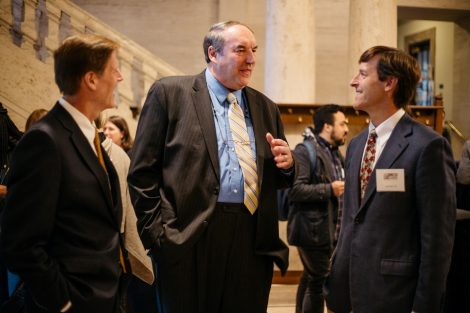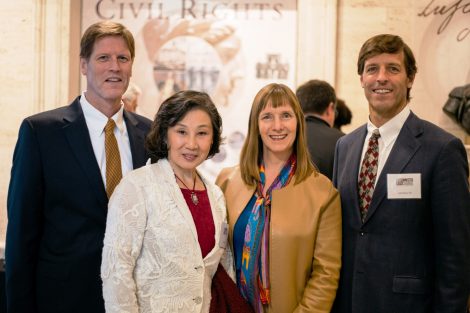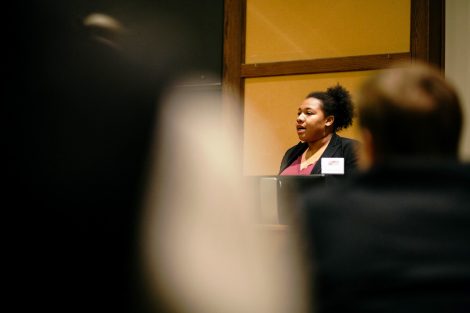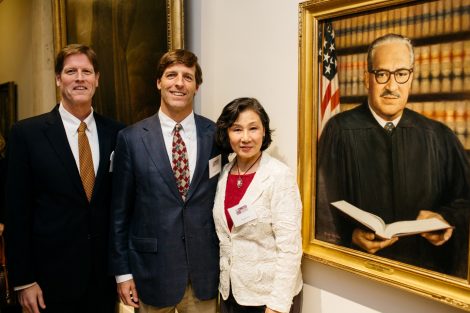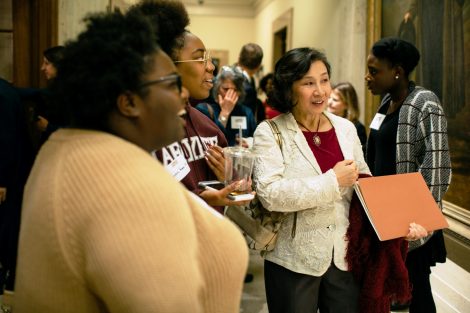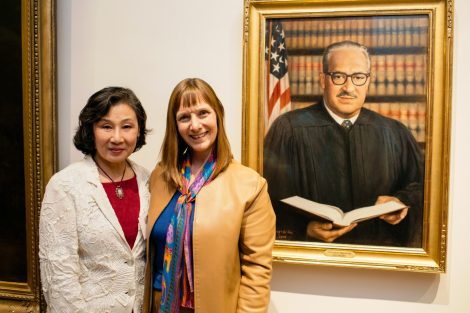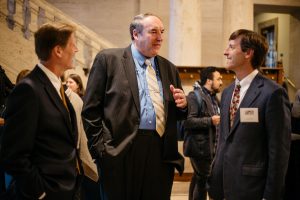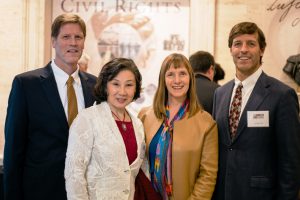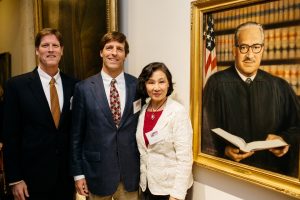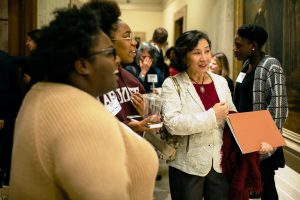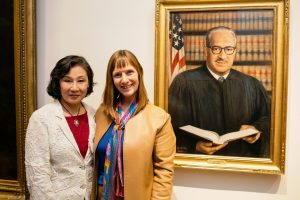Repeated shouts of “Thurgood’s coming! Thurgood’s coming!” signaled to frightened African-American communities in the segregated South during the 1940s and 50s that help was on the way. Thurgood Marshall, possibly “the best lawyer in American history,” was arriving to represent “someone on trial for their lives, most often because of a completely false and trumped-up capital case,” said Bruce Murphy, Fred Morgan Kirby Professor of Civil Rights.
Two decades later and half a world away in China, Mao Zedong launched the Cultural Revolution, persecuting millions of people through imprisonment, torture and seizure of property.
Those two worlds came together Oct. 24 with the College’s celebratory unveiling of a portrait of Thurgood Marshall that emotionally embraces the universal struggle for civil rights. The portrait was painted by Ying-He Liu, whose family was among the victims of Mao’s violence.
“The first 28 years of my life I spent in China, a country known for no civil rights,” she said. “My parents, western-educated scientists, were purged. Our home was rummaged and property was confiscated. I was among millions of young people banished to back-breaking labor in the fields. There was no electricity, no running water, no nutrition.
“I really know what it feels like to be living under oppression and with no freedom,” the artist said, as she and her audience fought back tears.
The portrait of the first African-American justice on the U.S. Supreme Court was commissioned by the Kirby Family with support provided by the F.M. Kirby Foundation. The portrait, part of the Kirby Collection of Historical Paintings, is displayed between paintings of the Marquis de Lafayette and legendary Chief Justice John Marshall in the Kirby Hall of Civil Rights.
L’Eunice Faust ’17, Student Government president and an African-American student majoring in psychology, said that Marshall’s “passion, intellect, and innovation … is what allows all of the students of color on this campus to be here. It is because of Justice Marshall’s example that students at Lafayette know there is power in conversation, in diverse friendship, and an integrated community.”
Murphy, a constitutional law scholar, told the story of a young man who learned the U.S. Constitution by heart because he was forced to read it when he misbehaved in school. When that young man became Howard University Law School valedictorian and attorney Thurgood Marshall, he successfully sued the University of Maryland – his first choice for law school – over its segregated admission policy.
“Then, he joined Dean [Charles] Houston, working with the NAACP legal defense fund, as they drove around the South documenting the lack of equal facilities in public schools,” Murphy said. “Houston would drive the old car from city to city and school to school, while Marshall typed up their findings on an old manual typewriter balanced on his knees.”
Marshall’s philosophy – “do what you think is right, and let the law catch up” – played itself out in the 32 cases he argued before the Supreme Court; he won 29 of them.
“I love this portrait of Thurgood Marshall,” said Murphy, author of four biographies of five Supreme Court justices. “And, I will enjoy nodding to it every day when I come to teach in this building. This is where he belongs, as the first person of color on these walls. For all eternity, he will peer at generations of Lafayette students and faculty, and visitors to campus … And he will make us all think every day, especially in this terribly contentious election year, about the kind of more inclusive and accepting America that we all want, and all need, and how we must always be prepared to fight hard, as he did every day, to get there.”
